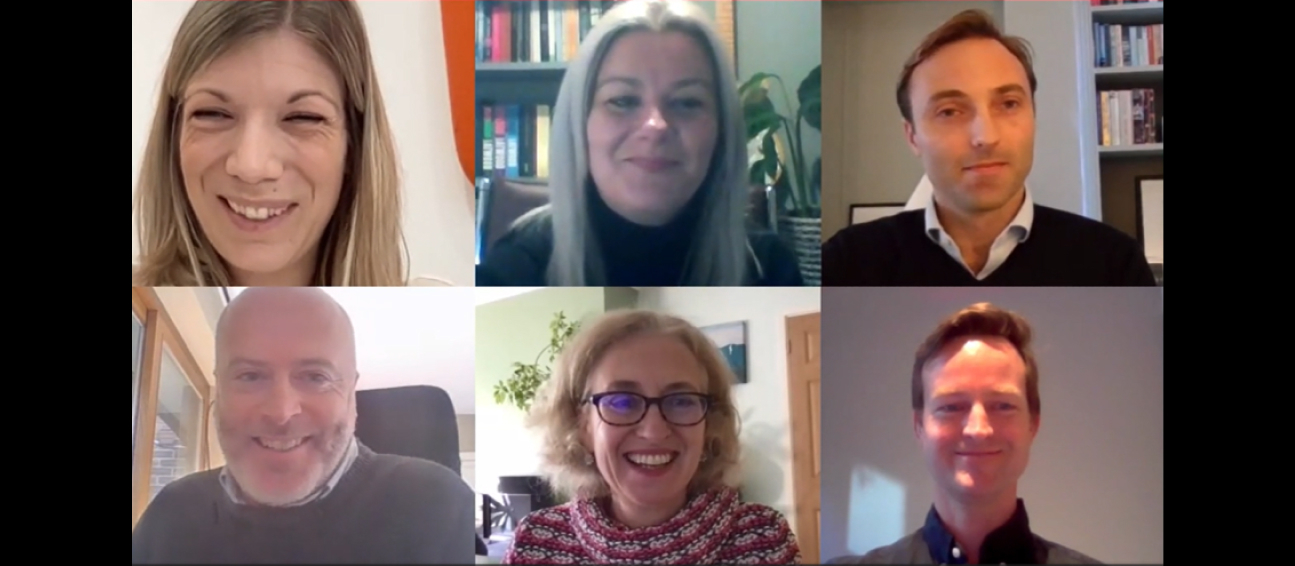
The webinar hosted by Campaign and fronted by our CEO Alistair Hill was also supported by a myriad of Omnichannel experts to discuss the topic further including George Blunden, Director of Strategic growth at Xaxis, Dan Mogridge, Media Lead for Vodafone, Natalie De Cruz, Client Partner for Carat UK and Anita Caras, Insights Director at Yahoo.
The panel not only discussed what the potential pitfalls to watch for are, but also what challenges there are to circumnavigate as the world moves increasingly in an omnichannel direction. Other areas of debate included what brands need to adapt, learn and finesse in an Omnichannel approach and, crucially, how to find out which channel is really working.
Firstly, what does Omnichannel actually mean?
Firstly, Dan from Vodafone kicked off the session with a very good point in stating that Omnichannel can mean different things to different people and there is not a simplified, one version of understanding across the industry at this stage. As such, there is importance in ensuring your understanding of Omnichannel matches between client and agency.
Anita then gave her thoughts on what Omnichannel marketing means from a media owner perspective. She suggests that if we look at this through the eyes of the customer, they simply see a brand versus the channels in which they are active. So, it’s important that the channels and brand story that is being promoted correlates as one in which it makes sense to the consumer. Otherwise, multiple channels (and indeed multiple messages) will ultimately confuse brand messaging. However, she also stated that managing campaigns in delivering a holistic brand experience is now what a consumer expects.
George from Xaxis stated that we need to address and come together on Omnichannel as an industry as everyone’s definition is indeed different. Media is messy and can be difficult for both audiences and clients. What he sees currently is campaigns that are often planned holistically, but then activated in silos. Bringing the channels together to create a single overall experience for the user is therefore the most ideal scenario. This is exactly why Group M created their Unmissable product to do just that! From there, linking common audience and KPI goals is the next ideal outcome.
For Natalie, there are still lots of unanswered questions around Omnichannel that need to be discussed further. Yes, Omnichannel can deliver growth in terms of both finding new customers and creating value with current customers, but she also believes it delivers great opportunity to grow the bottom line. However, this requires increased commitment from the client to create a unified vision in order to ensure optimum Omnichannel campaign success.
For Alistair, understanding the motivations from advertisers and agencies for buying Omnichannel campaigns is key, so that from a measurement perspective, we can ensure these objectives are continually covered off accordingly.
So, what about Omnichannel measurement?
Natalie stated that the challenge is often that people look how they deal with measurement after a campaign has been established. However, she argued that measurement should be included at the beginning of the process, allowing for a North Star Framework to be established and an accurate way in which the campaign can be proved accountable being established from the start. She did state however that it can be very difficult to get every single part of the business to have the same KPI. This was echoed across the other panellists, but her view was that as long as the brand has the same overall value/message across all departments, this is the main ideal objective. From there, it’s about ensuring brands have thought how each channel exists and what lever they are looking to pull and that’s when measurement becomes very meaningful.
Anita then stated that they want to see the uniqueness that each media channel delivers and what each brings to the party for driving industry learnings on what creates success.
For George at Xaxis, through building out their Omnichannel solution, they too have identified disconnect between the channels and their relationships with each other. However, he listed 3 ways in which they are dealing with these challenges:
1. Through working closely with the On Device Research Omnichannel solution, they gain understanding how each channel impacts each part of the brand funnel.
2. Secondly, understanding how efficiently they have delivered the media across the different channels whilst also gaining clarity on how they bring them all to present the same level and same impact. As such, they’ve created an impact ratio to help each media deliver equally and therefore this then helps in creating efficiencies.
3. Thirdly, working closely with clients and sales is imperative. Understanding where the uplift of sales has been seen and if this correlates with the campaign KPI’s.
Xaxis are also able to target users at postcode level and that defining audiences by location is relevant to 89% of their clients.
For Alistair, the game changer with Omnichannel research is that brands can really start to prove what media is shifting what. A recent case study for an online estate agency demonstrated how different channels shifted different parts of the brand funnel. This then helps with attaining media efficiencies dependant on the campaign objective. He also stated that having created a single source solution to Omnichannel measurement ultimately helps the industry attain a fairer understanding into the effectiveness of each channel.
The importance of a single source measurement solution was also demonstrated here within an audience poll:

From this, we can see almost half of the audience felt a single source measurement solution was very important and a further 50% stating it’s important in demonstrating true accuracy and accountability within Omnichannel campaigns.
Dan stated there has been an over reliance on first click attribution and often the industry has spent the last 5 years battling against this. However, there is light at the end of the tunnel and Omnichannel measurement done correctly will hopefully allow further shifts away from the challenges of first click attribution data.
Alistair then confirmed that On Device Research also have norms data to help drive increased understanding of each campaign’s effectiveness. And again, this helps deliver what channels are most effective at driving what metric. For example, our current benchmark data suggests that banner ads are not great at moving consideration, but incredibly successful in driving awareness.
George from Xaxis also stated another benefit of Omnichannel measurement is the ability to review the data and adapt your strategy according to the results. Brands and their agencies can then dial up or dial down channels to help achieve their ultimate objective.
Anita then confirmed the need for continuous measurement. There are no hard and fast rules, so constant research is necessary over the course of number of years in order to achieve success in the Omnichannel world.
What about the goal of one DSP?
Anita from Yahoo stated that planning and activating in one overall action is the ultimate goal. It’s felt there will be further consolidation of inventory pools from a DSP perspective in the future and that this will deliver a competitive advantage in a cookieless world. But as Dan said, there are multiple consumer touchpoints and one or two DSP’s won’t solve everything. It is still incredibly important to review each channel carefully. Planning needs to start at an Omnichannel level in the first instance and furthermore developing a better understanding of the capabilities of each channel is key. But of course, there is still lots of work to be done here. For Yahoo, Anita is constantly assessing where their core consumers are and where it makes sense in building out to specific customer needs. Yahoo are currently speaking to many as a brand, but as omnichannel evolves, they cannot continue to buy in silos and there is a real need to ensure the process is more fluid for it to work successfully. Digitalisation has begun to make that happen.
However, for Dan the Utopia of one DSP is indeed that! A utopia. In principle it would be fantastic, but he asks the question regarding who could actually offer that? Each media is managed and thought about very differently and albeit technology can help solve some of that issue, the human part is what would create difficulties.
Natalie then also made a very valid point that technology cannot replace human creativity. At the core of this, we have to remember that advertising is about people experiencing brands within their day to day lives. The utopia of one DSP would need to enable this outcome to be achieved opposed to a tech system taking full control of it. Anita agreed that at the heart of Omnichannel campaigns, they still need human intervention to allow creative spark to shine, because this is what delivers cut through.
What are the challenges when it comes to creative execution in Omnichannel campaigns?
Dan kicked this off stating it can become very complicated. With so many different media channels, this is to be expected. However, he did say that sometimes all it takes is some very simple changes to be made across the channels and this can make a massive difference, but of course this isn’t always done.
George also mentioned the importance of personalisation alongside ensuring the campaign message is as consistent as possible across all channels. However, remembering that it can be altered via location, or data via stock levels, etc. can make a real difference. Just think about small tweaks really.
Summary
So, what is most important when planning an Omnichannel Campaign?
George believes that the channel mix and creative are most important to consider when planning an Omnichannel campaign. Dan agreed with this stating that 90% of the time, the best media plans start with the best creative idea. When it came to wrapping up the webinar discussing the future of Omnichannel measurement, Dan stated that we’re in exciting times but that it is likely there will be re-evaluation of the importance of traditional channels. George also stated that gaining continued understanding in which media channels are working and how and why will continue to increase in importance.
If you’d like to find out more about the On Device Research Omnichannel Brand Impact solution, please click here: https://www.ondeviceresearch.com/omnichannel-brand-impact
If you would like to see a recording of the webinar, please sign up here: https://insight.campaignlive.co.uk/omnichannel-effectiveness-how-do-you-know-whats-working
For more information about On Device Research, please visit https://ondeviceresearch.com
